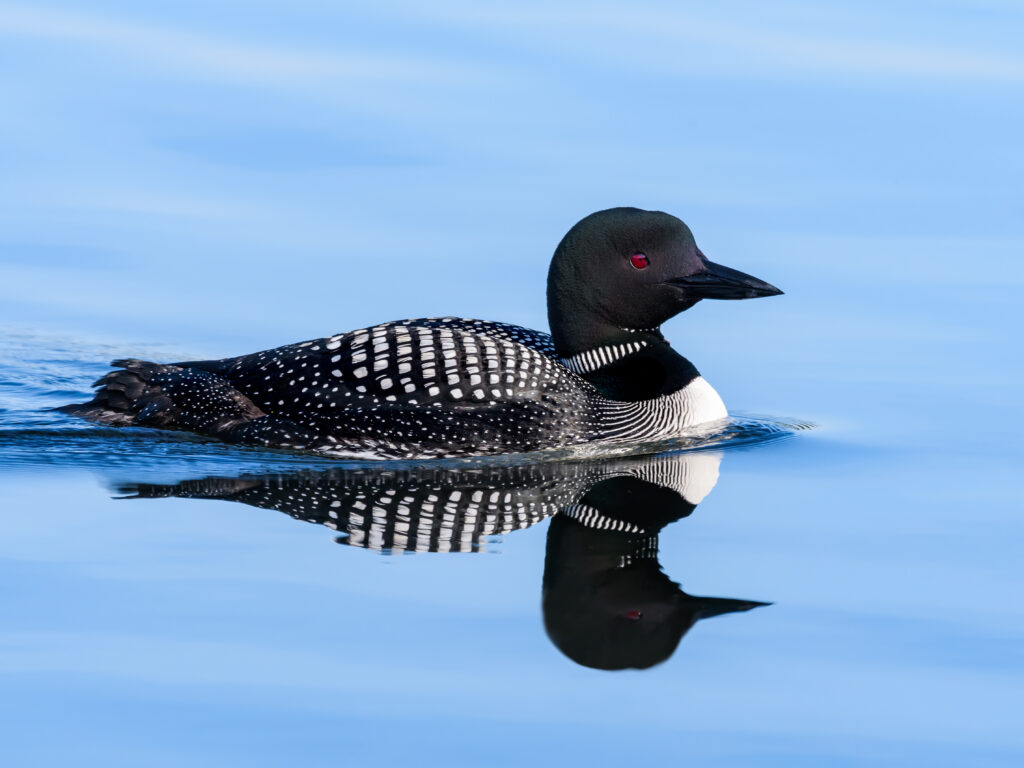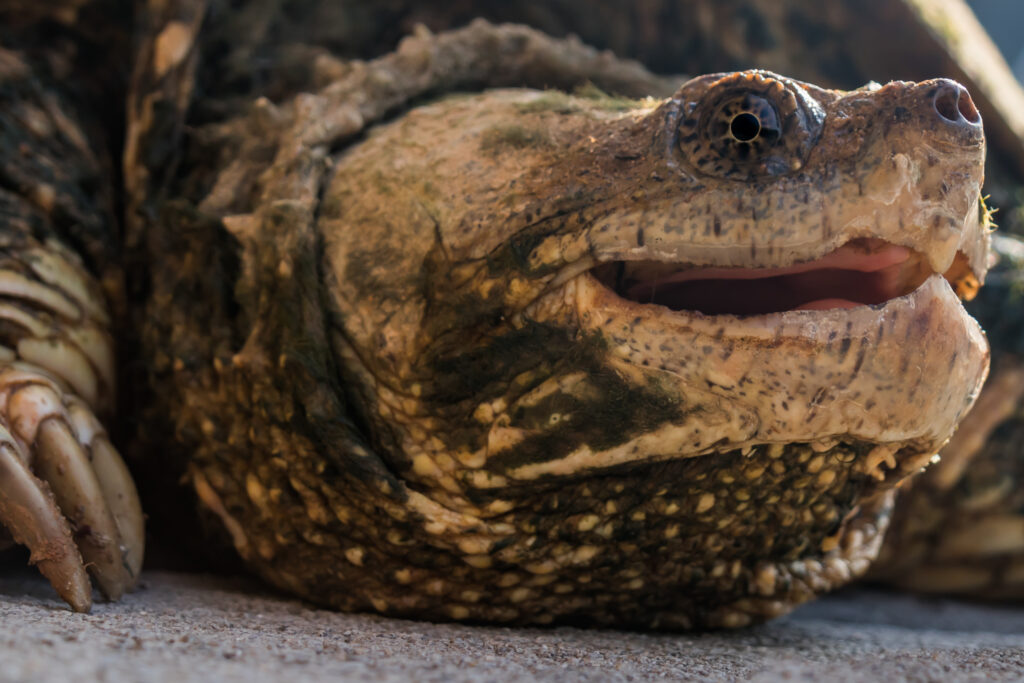
Loons up close are gorgeous. We know their distinct call, as it carries in the air over lake water. But we don’t all know what they look like up close. (I didn’t.)
Elegant black head and neck, with a white and black necklace at the throat. A body of deep black feathers with white dots. And not as large as I would have thought – more like the size of a duck. But their beak is sharp and accurate, so the staff members treating her wear clear protective eye shields.
As with securing the talons of an owl or hawk, ensuring that the beak of a loon doesn’t injure the staff person is the key to how it is handled.
This one was in ICU, and needed hydration fluids and tube-feeding. In this case, a staff member retrieved the loon from its enclosure, and I was able to help hold it while it was being treated and fed.
We then moved it to a different room down the hall where it has a large pool to swim in, with a floating raft it can step onto if it wants to, and live minnows to catch and eat. As soon as she was released into her pool she dove for the minnows.
How do you pick up a large adult snapping turtle?
Carefully – LOL. One of the adult snapping turtles at TWC right now has a piece of her carapace broken away, exposing the flesh underneath. But she seems to be healing well. And tonight when she needed to be given an injection of antibiotics, I retrieved her from her pool and held her for the staff person.
So, how exactly do you retrieve a snapping turtle from a pool, and pick it up to move it? Well, first of all, you know you are going to get wet. (Though not as wet as catching an aquatic bird from a pool using a bedsheet.)
In this case, using your non-dominant hand, you gently hold the base of the tail where it meets the shell. This part of the turtle is as thick a my wrist. Then with your dominant, stronger, hand, reach underneath from behind and lift her up from below. This way, she is facing away from you, and her strong beak can’t reach back to bite you. She is heavy!
Then to secure her and ensure no one gets bitten when she is being treated, her face goes into a turtle-specific plunger (see my earlier post here), where she will hiss. The treatment was done in an instant – it took longer to retrieve her and place her gently back in her pool!

